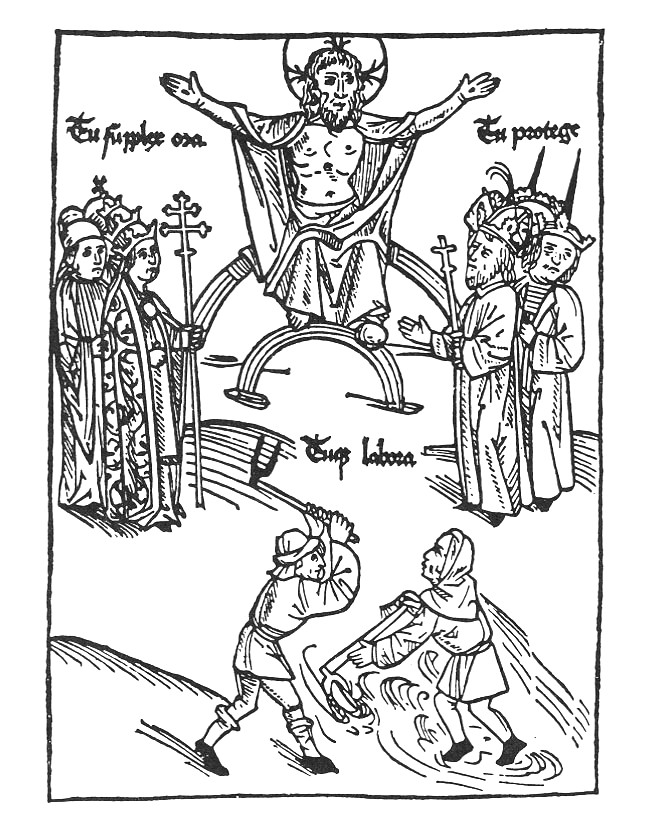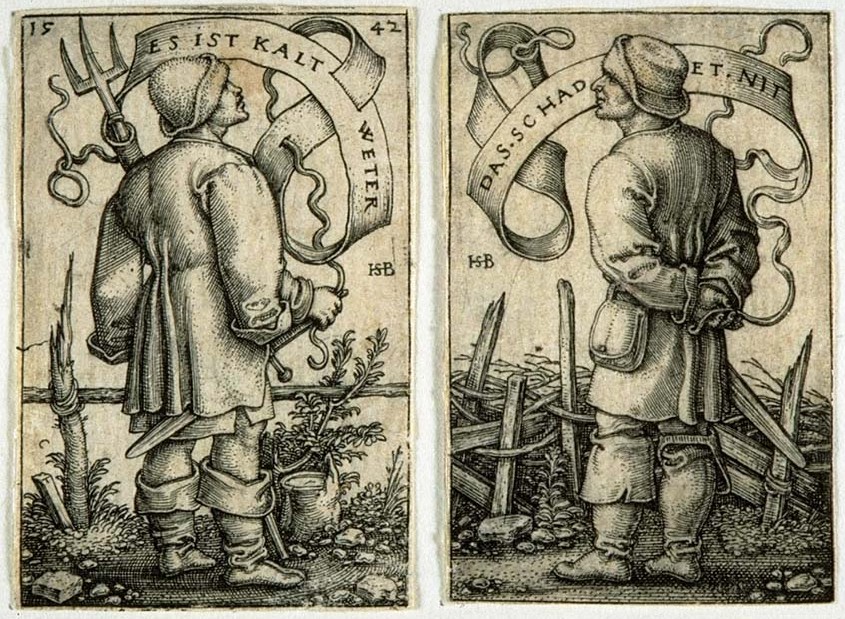Textbook Reading: Lindberg, chapter 1; McGrath, chapter 1
I. Plague and Depression
A. Dimensions of Pandemic
B. Agrarian Depression
C. Good Times in the Fifteenth Century?
II. Structures of Urban
Life
A. The Empire: A Landscape of Cities
B. Structures and Tensions: Patricians, Artisans, and Outsiders
C. City Power: City Leagues and Merchant Associations
Map: The Spread of Plague, 1347-1351
Graph: The Human Cost of
Plague: Barcelona, 1348-1653
Graph: Child Mortality and
Plague: Siena, 1348-1400
Graph: Prices and Wages in
England, 1260-1600
Graph: Sixteenth-Century Price
Inflation
Map: Village Desertions in Late Medieval Germany
Chart: A Typical Nucleated Medieval Village
Image: A Late Fifteenth-Century
Village



Top image: Detail of Pieter Bruegel the Elder (1525-1569), Landscape with the Fall of Icarus (c. 1558). Oil on canvas, mounted on wood. 73.5 x 112 cm. Musées royaux des Beaux-Arts de Belgique, Brussels. Image source: The Artchive.
Bottom image: Hans
Sebald Beham (1500-1550), "Es ist kalt Weter" & "Das schadet nit"
("It is cold weather" and "That's of no concern"), ca. 1542.
Engravings, image size: 45mm x 29 mm each. Image source: University of Kansas,
Spencer Museum of Art. The artist identifies himself with the
device "HSB":
![]()
Image left: This engraving by Jacob Meydenbach illustrates the medieval concept of the three orders of society and their functions. In the upper left-hand corner are a prelate and a pope, identified by his tiara, who represent those who pray; in the upper right are an emperor and a king or noble, representing those who protect; at the bottom are two peasants, standing for those who work. Source: Johann Lichtenberger, Prognosticatio (Mainz, 1492); Werner Rösener, Peasants in the Middle Ages (Chicago: University of Illinois Press, 1992).
Central Europe in 1477
Chart: Urban Foundations in
Central Europe, 1150-1950
Image: A Typical German City:
Frankfurt (1572)
Map: Jewish Communities in
the Rhineland, 1349